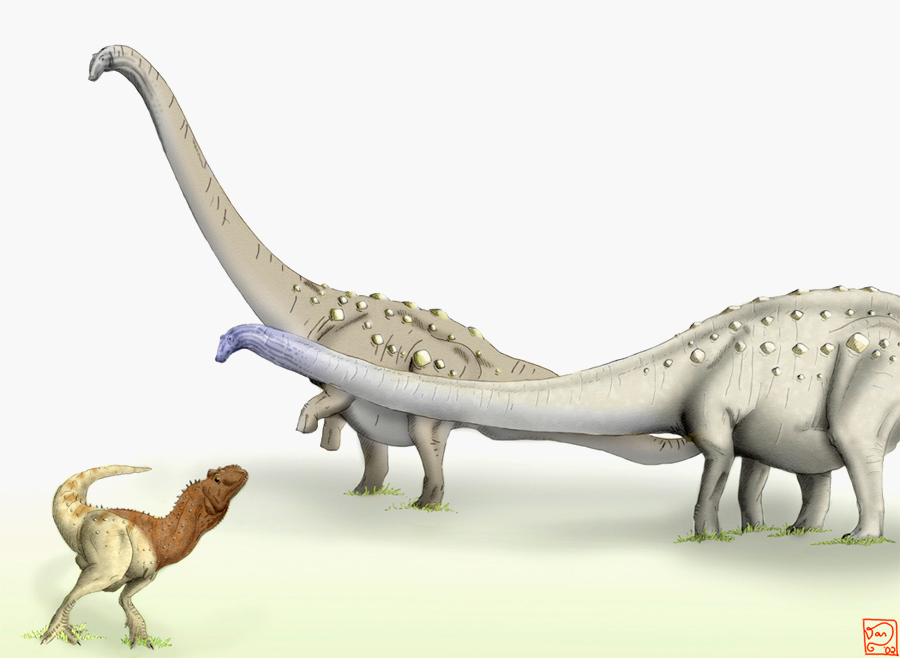

The 20 meter-long, 12-tonne bandersnatch grass-bag (Neotitanosaurus dodgsoni) is the almost the largest land animal on the Specworld, second only to the related great grass-bag. They range across southern and eastern Africa, but are most common on the Serengeti plain, where they congregate with many other grazers. These enormous titanosaurs are actually rather lazy creatures, standing in a single spot and swinging their long necks through their arc of movement, cropping all the vegetation they come across. Evidence of grass-bag grazing, in the form of rows of concentric arcs of cropped grass, are common on the African savanna.Bandersnatches are rather more social than the larger great grass-bags, collecting into pods of six to ten adults, mostly female. Bulls, which are more lightly built than cows, are generally solitary, though it is not unknown for a single aged male to join his favorite pod and care for his children along with his consorts. Adults of sexes exhibit the striking blue and black-striped head, though in the males, the blue extends further down the neck.
A grass-bag's dentition exists solely as a row of thin, flat teeth at the front of the lower mandible, paralleling the grass-cropping mechanism of Home-Earth's ungulates. Unlike those mammalian herbivores, however, grass-bags lack molars and do not chew their food. Instead, they pass the grass directly into their enormous crops, where rocks the size of a man's fist grind the high-silicate plant material into an easily digestible paste. This method of digestion is strictly dinosaurian, and is shared across the clade.
(Text by Daniel Bensen)